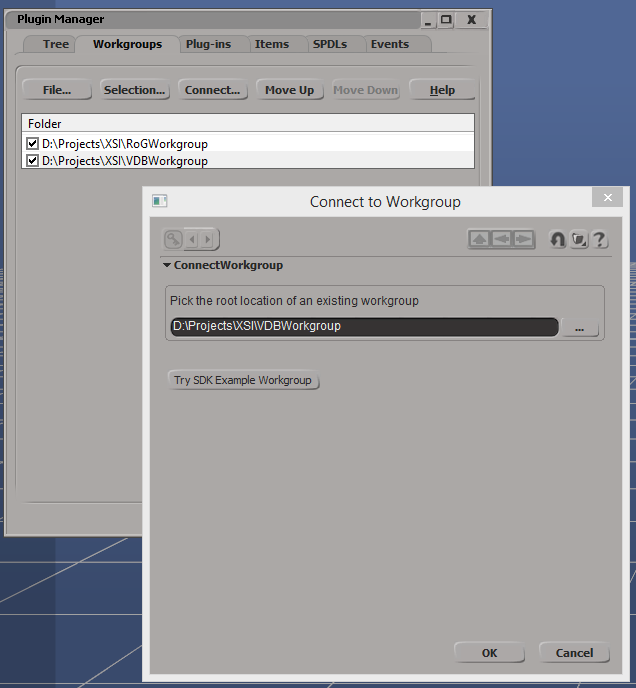Tips and tricks on various CGI-related topics.
✈ PIOSEE — Simple and Effective Decision-Making Model for Work & Personal Life (Plus a Free PDF Cheat Sheet)
The time has come…
Time share a valuable piece of insight, something I've relied on for several years now and use almost instinctively for problem-solving and decision-making. I’m confident you'll also find it useful in your work and personal life. It's called…
✈ PIOSEE
Allow me to elaborate.
✈ PIOSEE is a decision-making model which stands for:
- Problem
- Information
- Options
- Select
- Execute
- Evaluate
What makes it special is that P➡I➡O➡S➡E➡E is a sequence of actions that airplane pilots follow when making decisions. It's especially useful in complex, stressful, high-stakes situations where lives are on the line, is incredibly effective for planning, brainstorming, and can be applied in discussions.
Extreme Intel/AMD CPU and APU Underclocking and Undervolting For Maximum Battery Life Using Universal x86 Tuning Utility

YouTube channel Just Josh released a video review of Lenovo Yoga Slim 7i 14 laptop powered by an Intel Ultra 7 258V CPU (or an APU, strictly speaking).
Terribly-named Intel chip model aside, the laptop was able to deliver jaw-dropping battery life in the video playback test:
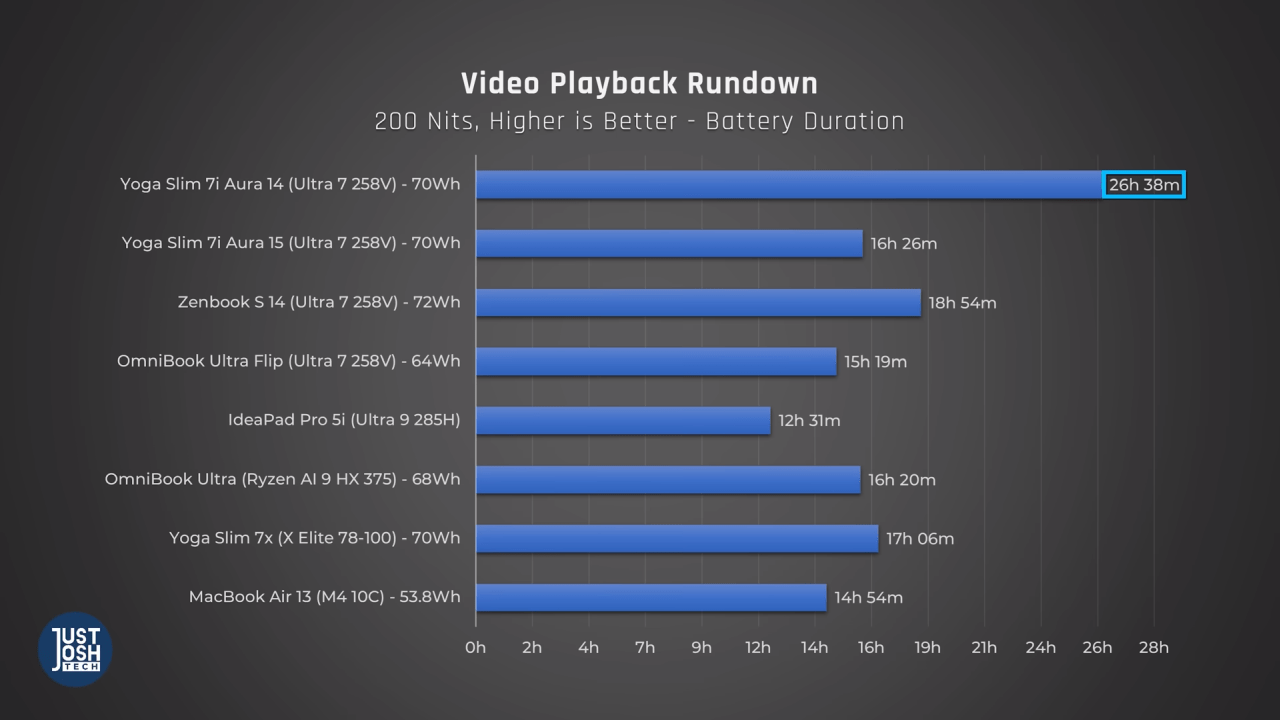
These are record-breaking results that are even better than those of ARM-based Apple laptops, let alone other x86-based Windows machines! When I showed this review to a good friend of mine, we had quite a debate, since he couldn't or wouldn't believe those results. Afterwards, I decided to compare Yoga Slim 7i to my own Lenovo IdeaPad 5 Pro 14ACN6 laptop in terms of battery life in such a use scenario.
My 14ACN6 (released Feb, 2022) features an 8-core AMD 5800U CPU, 16GB of DDR4 RAM and a 56Wh battery. In conditions similar to those in the review (power saving mode, looping 1080p H.264-encoded H/W-accelerated video playback at 200 nits of brightness) The laptop delivered 7h 40m of battery life.
So about 8 hours for a brand new unit, considering the 96.3% battery health of mine. But then, the review model of Lenovo Yoga Slim 7i 14 had a fairly beefy 70Wh battery. To compare apples to apples, I'll simply add 25% to my test results, so that with the same battery the best theoretical case scenario for this laptop would allow for about 10 hours running off the grid. Certainly a far cry from the 7i's results…
How to Survive Without a Numpad. Alt ♫ Code ☼ Emulation ♥ on Tenkeyless (TKL) and Laptop Keyboards With Autohotkey, the "Unix Way"

I recently obtained an extremely hard to find retro keyboard I always wanted.
It's one of those models with tactile mechanical switches, but not the deafeningly loud buckling spring ones. It both looks majestic and can actually be used on a modern PC thanks to the USB 1.0 interface.
Take a look. It's glorious!

Typing on it brings back memories of the old-school terminal computers, and the time when I typed my first words on a similar mechanical, solidly built keyboard. Which might explain why I have come to love expressing my thoughts through writing so much.
Ahem, anyway… There is just one tiny little issue with this keyboard. Coming from the early 2000's it completely lacks n-key rollover. Which makes it entirely unsuitable for gaming or any other applications where you're expected to press and/or hold several non-modifier keys simultaneously.
Think "WASD" 1st person shooter controls. That's not possible on a "retro" keyboard. And neither is something like this:

BTW, you can test your keyboard's rollover capabilities here.
I don't game much on my main PC, instead usually going for either one of my consoles or a fairly powerful guest-room laptop, which are all connected to a projector. So it's not really an issue. But I would like to have an option to make use of my monstrous RTX 4080 not just for rendering, video editing/encoding and running CUDA-accelerated apps, but for gaming also.
Consequently, I decided to get one of those compact wireless/wired "gaming" mechanical keyboards that are all the rage right now.
My Little Keyboards, My Little Keyboards...
After an extensive research, initial confusion and even shock, I landed on these two cuties. They both look so retro and slick, that I had to get both. Don't you judge me.
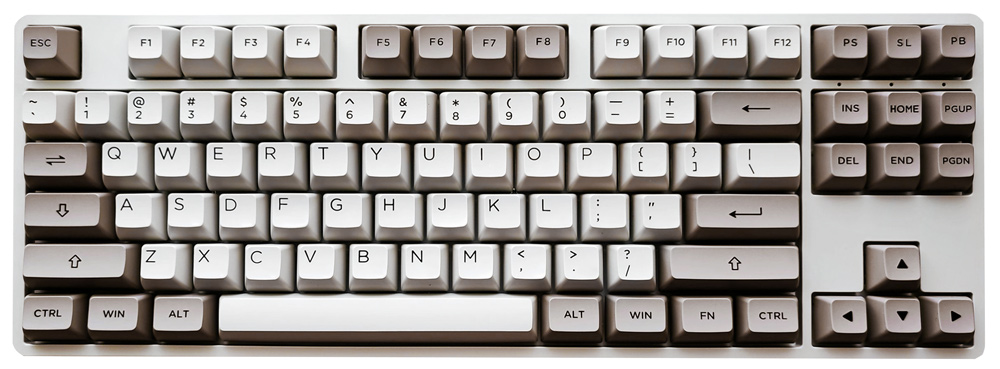

And if you look closely enough, you might notice that they both lack a numpad!
How to Fix Delayed Notifications on a Google Pixel Phone on Android 11, 12, 13, 14 Using ADB via USB (Tethered) or On the Device Itself (Untethered)
Relevant for Google Pixel models:
- Pixel 4, Pixel 4a, Pixel 4a 5G, Pixel 4 XL
- Pixel 5, Pixel 5a, Pixel 5a 5G
- Pixel 6, Pixel 6a, Pixel 6 Pro
- Pixel 7, Pixel 7a, Pixel 7 Pro
- Pixel 8, Pixel 8a, Pixel 8 Pro
- Pixel 9 and 10 series phones
Android versions:
- Android 11
- Android 12
- Android 13
- Android 14
- Android 15
- Android 16
Great Cameras, Buggy OS
One of the requirements for a new project of mine was a dedicated Android smartphone with some of the best cameras on the market. According to the latest tests, the Google Pixel smartphone lineup still leads the pack when it comes to reasonably priced camera phones. It also seems like there haven't been any noticeable improvements on the camera hardware in those since the release of the 6th generation of Pixels. So I picked up a shiny new Pixel 6a, created a new Gmail account and signed in.
All was going well until I realized that most, if not all email and instant messaging apps' notifications were delayed. Sometimes for a minute. Usually – for much longer.
At first I shrugged it off, thinking, "Well, what did I expect? It's an Android phone. You have to spend time fiddling with it to get it to behave as needed...". You know the drill.
Therefore, I made sure to try and fix this with the tools presented by the OS:
- Disabled Battery Saver and Adaptive Battery
- Lifted any background activity restrictions for Gmail and messaging apps
- Allowed those apps to have unrestricted access to the internet
- Updated both Android and the apps to the latest versions
![]()
Alas, even after completely powering down and restarting the phone, as recommended in some forums, nothing changed. Within about 5 minutes, the phone would still go into some sort of a deep sleep mode, which in turn would cause email and instant messaging notifications to be delayed again.
Really? Do I still have to switch into a "Power User" mode and jump through hoops to fix freaking notifications?
Guess some things never change…
Protect Unity Prefabs From Changes With the ISerialization Callback Receiver Interface
Unity prefabs are awesome. They are easy to create, easy to instantiate, and with the current versions of the Unity Editor can be used to create prefab variants and even nest prefabs within prefabs, allowing you to modularize the design of systems and scene objects.
But this simplicity comes at the cost of a higher risk of screwing things up the larger your project or the team grow...
All because of this little "Apply All" Inspector button, which is both a blessing and a curse:
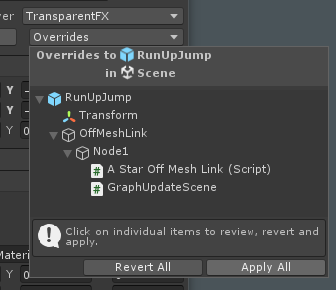
You know what I'm talking about. Imagine having a prefab for an object or an important interactive actor, and scattering it all over the scenes in the project, each one — with its own unique overrides for the position, variable values or even MonoBehavior component scripts attached or removed. Obviously, they are all based on the same shared prefab asset on disk, which is expected to have a certain set of initial values and components, which are then either used "as is" or are changed slightly here and there in the scenes.
The problem is, it only takes one careless press of the "Apply All" button to screw up the prefab for every single instance of that prefab in all the scenes! And chances are, you or a member of your team will eventually press this button and completely change the base prefab on disk, which all scene instances are based upon. And the more prefabs in your project, or members in your team, the higher the chance of this event happening. Sometimes stealthily, which is even worse... Thank Heavens for version control!
Unfortunately, Unity doesn't provide a way to disable this button for certain prefabs (at least I wasn't able to find a way to do so). That's why when designing my previous game, even though I was the only developer and scene builder, I decided to save myself the headache and created a custom bare-bones "ActorLoader" prefab. I would then exclusively use this prefab to place interactive instantiatiables in the scenes. Such a prefab had just a handful of fields which were meant to always be overriden and not to use base properties stored in the shared prefab: a prefab type enum (used to determine which prefab to instantiate from the Resources folder), starting Transform parameters and a couple of modifiers, all overridden right away to ensure that no changes to the base prefab asset would ever break ActorLoaders anywhere in the project. And this approach worked wonderfully.
Such "loaders" are in fact considered standard practice in the industry in contrast to scattering actual prefabs in the scenes, for a lot of reasons, which I won't list here. But this still doesn't solve the original problem of prefabs being modifiable with a press of a button!
A Solution!
Unity prefab is just a serialized object. Which means we can tap into the serialization routine and do something when Unity serializes or deserializes a prefab in the Editor. All you need to do is extend one or several MonoBehavior components attached to the prefab from the ISerializationCallbackReceiver interface, and implement a couple of methods.
Here's how I did it in my current project: inherited a component from MonoBehavior and the interface:
// See: https://docs.unity3d.com/ScriptReference/ISerializationCallbackReceiver.html
public class MyClass : MonoBehaviour, ISerializationCallbackReceiverAnd then implemented a custom OnBeforeSerialize() routine, which is executed right before Unity commits any changes to the serialized object, which is a prefab in our case. I've commented it to help you understand how it works. Nothing special, but gets the job done:
#region ISerializationCallbackReceiver
void ISerializationCallbackReceiver.OnBeforeSerialize()
{
// This can only be done inside UNITY_EDITOR since we can not check prefab status in a build!
#if UNITY_EDITOR
// IMPORTANT: EditorApplication checks must be done first.
// Otherise Unity may report errors like "Objects are trying to be loaded during a domain backup"
if (EditorApplication.isPlayingOrWillChangePlaymode || EditorApplication.isUpdating) return;
// Validate the type of your prefab. Useful pre-check.
if (UnityEditor.PrefabUtility.GetPrefabAssetType(this) != UnityEditor.PrefabAssetType.Regular) return;
// Override properties only if this is a prefab asset on disk and not any of its scene instances
if (UnityEditor.PrefabUtility.GetPrefabInstanceHandle(this)) return;
// Finally, re-set any fields to initial or specific values for the shared asset prefab on disk
// This protects these fields when "Apply Override" gets called from any of prefab's scene instances
// Example: enforce default position, rotation and scale values for the prefab
transform.localPosition = Vector3.zero;
transform.localRotation = Quaternion.identity;
transform.localScale = Vector3.one;
// Example: your variables here
// myFloat = 1f;
// myAssetRef = null;
// myClassInstance.myString = "Default string";
#endif
}
// OnAfterDeserialize can be left empty
void ISerializationCallbackReceiver.OnAfterDeserialize() { }
#endregionAs you can see, this method makes sure that each serialization call to the shared prefab asset on disk goes through a custom procedure which re-sets values for certain fields and references, and can even check whether specific components are attached to the prefab root or any of its children, and either add them if they're missing, or remove ones that shouldn't be there. This procedure is invoked any time prefab is serialized, which includes the aforementioned "Apply All" button or any other way to apply changes to the original asset.
And there you have it! With this approach each time you create a new prefab you can decide which shared asset fields and references should be protected from accidental overrides, and simply specify default/initial values for them within the ISerializationCallbackReceiver's OnBeforeSerialize() method.
Using Cloth Simulation and Delta Mush Deformer for Skin Collision in Animation
I'd like to present the results of a study I conducted recently:
Story
Working on the animated short film I am constantly updating a list of tasks to do in order to achieve a descent final result. One particular topic took my sleep away recently when I remembered that in order to correct skinning errors on animated characters you'd either have to sculpt and then script a bunch of blend shapes or would need a muscle system available in your DCC software.
I then turned to Maya, which has had a muscle system for ages.
Maya Muscle system
Maya provides several deformers to manage soft- and hard-tissue interaction between muscles like smart-, self- and multi-object collisions. Even though they aren't terribly performant, they get the job done.
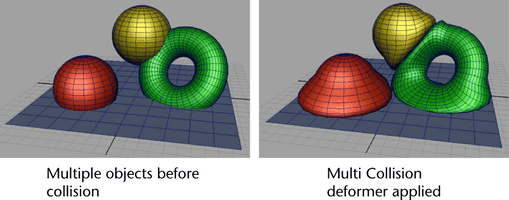
Unfortunately as soon as I would've used any of Maya's Muscle system tools I'd be tied down to a 185$ a month subscription plan for the whole duration of the project which would be outrageous. There is a lite-version of Maya available for indie gamedevs - Maya LT - which only costs 30$ a month, but it doesn't come with the Muscle system.

Hence I had to improvise and develop a simple and straightforward solution for this problem in a DCC of my choice.
VDB cloud with Softimage ICE and Redshift - a step-by-step tutorial
Since my first post about Softimage and OpenVDB was more of a brief overview than a tutorial, I decided to create a step-by-step guide on how to create a .vdb cloud-like grid with Softimage ICE using Mr.Core's (Oleg Bliznuk's) compounds and explain how they work on the way.

To follow the tutorial, download the compounds and connect the extracted workgroup in Softimage (File -> Plugin Manager -> Workgroups -> File -> Connect):

